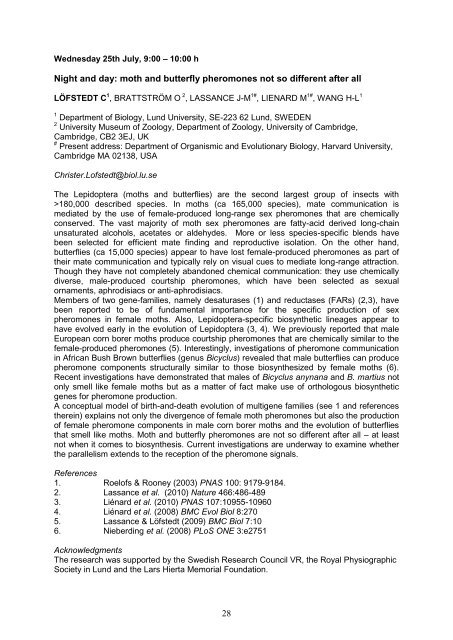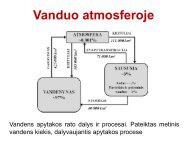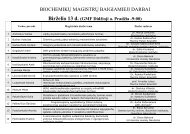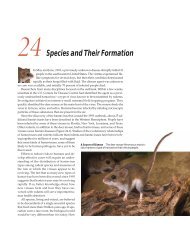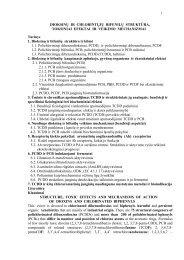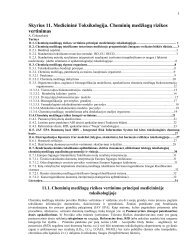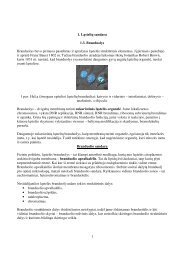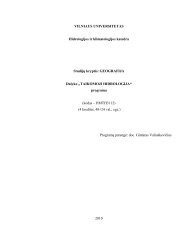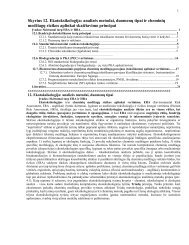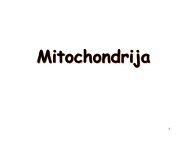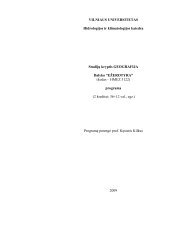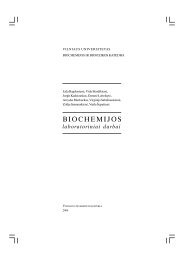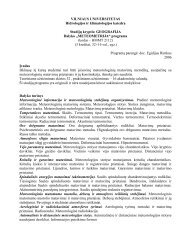2012 Program (PDF) - International Society of Chemical Ecology
2012 Program (PDF) - International Society of Chemical Ecology
2012 Program (PDF) - International Society of Chemical Ecology
Create successful ePaper yourself
Turn your PDF publications into a flip-book with our unique Google optimized e-Paper software.
Wednesday 25th July, 9:00 – 10:00 hNight and day: moth and butterfly pheromones not so different after allLÖFSTEDT C 1 , BRATTSTRÖM O 2 , LASSANCE J-M 1# , LIENARD M 1# , WANG H-L 11 Department <strong>of</strong> Biology, Lund University, SE-223 62 Lund, SWEDEN2 University Museum <strong>of</strong> Zoology, Department <strong>of</strong> Zoology, University <strong>of</strong> Cambridge,Cambridge, CB2 3EJ, UK# Present address: Department <strong>of</strong> Organismic and Evolutionary Biology, Harvard University,Cambridge MA 02138, USAChrister.L<strong>of</strong>stedt@biol.lu.seThe Lepidoptera (moths and butterflies) are the second largest group <strong>of</strong> insects with>180,000 described species. In moths (ca 165,000 species), mate communication ismediated by the use <strong>of</strong> female-produced long-range sex pheromones that are chemicallyconserved. The vast majority <strong>of</strong> moth sex pheromones are fatty-acid derived long-chainunsaturated alcohols, acetates or aldehydes. More or less species-specific blends havebeen selected for efficient mate finding and reproductive isolation. On the other hand,butterflies (ca 15,000 species) appear to have lost female-produced pheromones as part <strong>of</strong>their mate communication and typically rely on visual cues to mediate long-range attraction.Though they have not completely abandoned chemical communication: they use chemicallydiverse, male-produced courtship pheromones, which have been selected as sexualornaments, aphrodisiacs or anti-aphrodisiacs.Members <strong>of</strong> two gene-families, namely desaturases (1) and reductases (FARs) (2,3), havebeen reported to be <strong>of</strong> fundamental importance for the specific production <strong>of</strong> sexpheromones in female moths. Also, Lepidoptera-specific biosynthetic lineages appear tohave evolved early in the evolution <strong>of</strong> Lepidoptera (3, 4). We previously reported that maleEuropean corn borer moths produce courtship pheromones that are chemically similar to thefemale-produced pheromones (5). Interestingly, investigations <strong>of</strong> pheromone communicationin African Bush Brown butterflies (genus Bicyclus) revealed that male butterflies can producepheromone components structurally similar to those biosynthesized by female moths (6).Recent investigations have demonstrated that males <strong>of</strong> Bicyclus anynana and B. martius notonly smell like female moths but as a matter <strong>of</strong> fact make use <strong>of</strong> orthologous biosyntheticgenes for pheromone production.A conceptual model <strong>of</strong> birth-and-death evolution <strong>of</strong> multigene families (see 1 and referencestherein) explains not only the divergence <strong>of</strong> female moth pheromones but also the production<strong>of</strong> female pheromone components in male corn borer moths and the evolution <strong>of</strong> butterfliesthat smell like moths. Moth and butterfly pheromones are not so different after all – at leastnot when it comes to biosynthesis. Current investigations are underway to examine whetherthe parallelism extends to the reception <strong>of</strong> the pheromone signals.References1. Roel<strong>of</strong>s & Rooney (2003) PNAS 100: 9179-9184.2. Lassance et al. (2010) Nature 466:486-4893. Liénard et al. (2010) PNAS 107:10955-109604. Liénard et al. (2008) BMC Evol Biol 8:2705. Lassance & Löfstedt (2009) BMC Biol 7:106. Nieberding et al. (2008) PLoS ONE 3:e2751AcknowledgmentsThe research was supported by the Swedish Research Council VR, the Royal Physiographic<strong>Society</strong> in Lund and the Lars Hierta Memorial Foundation.28


